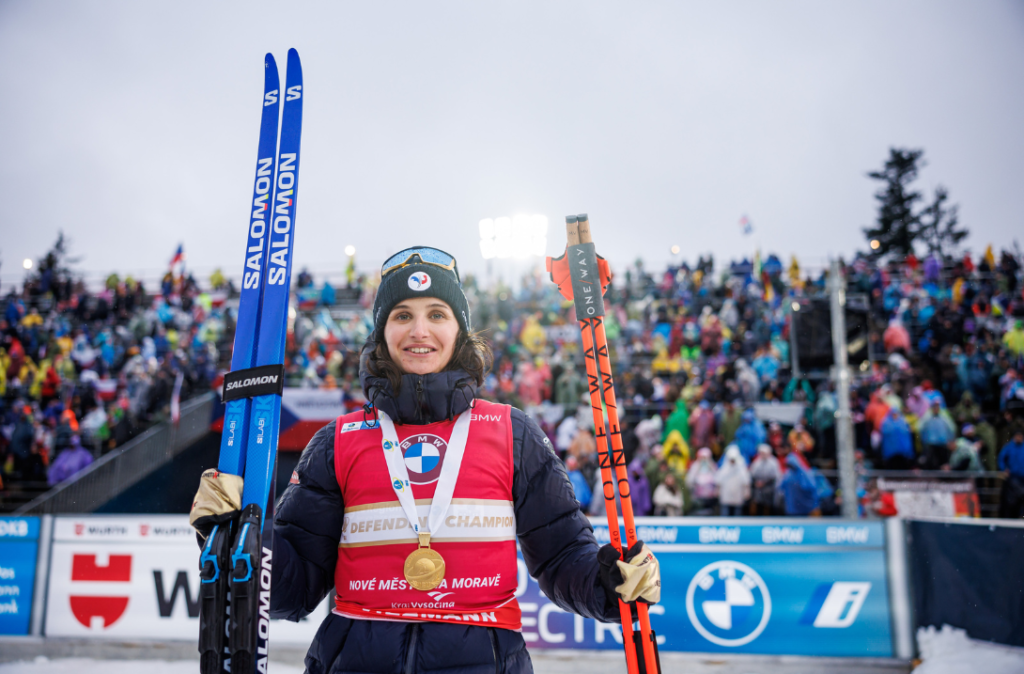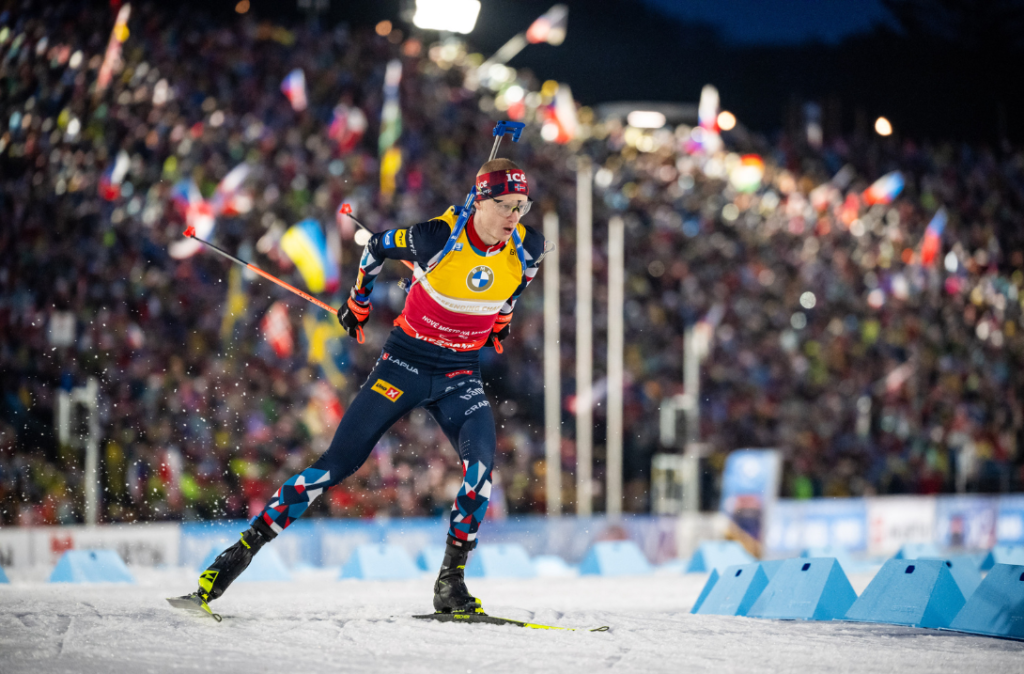Biathlon spring in Nove Mesto - Wax problems or just athletic performance?
Under normal circumstances, national teams look like a monolithic block. Coaches, athletes and everyone who is part of the team share in the athlete's success. Title winners and medal winners praise the conditions, thank the physiotherapist, waxing team, coach and the rest of the team, if necessary also the fans for their support and often enough a greeting is also sent to the home coach, sponsors and family.
Things become dangerous when the athletes rush past the cameras and microphones without a greeting in the event of failure. And things become particularly difficult when words like: "The material wasn't perfect today" or "Other nations had a clear advantage in terms of running today and it wasn't down to form." This is the moment when the alarm systems go off in the wax truck. Because then something has not gone well.
The Biathlon World Championships are currently underway in Nove Mesto and while France's women around serial winner Julia Simon and the Norwegian men were mentioning their staff, family, fans and friends in the first week, other nations were not so lucky. With the material! Germany, for example, who had traveled to the Czech Republic full of hope after their preliminary performances in the reasonably wintry winter so far, remained without a medal, running mercilessly behind. This led to frustration and the above-mentioned statements.
But what was the real reason? We are on the subject of the fluorine ban. At the start of the season, the IBU World Biathlon Union finally banned waxes containing fluorine mixtures. This was not out of boredom, but because it implemented an EU regulation. Certain fluorine compounds are considered harmful to the environment and are also difficult to break down.
Now one may argue about the meaningfulness of this decision, there are of course reasons in favor of the ban, but there are also counter-arguments. The fluorine particles contained in the waxes only make up, at best, a fraction of the total permitted use of the element in a wide variety of end products. This is due to its properties. Fluorine is water and dirt repellent. It works well, for example on winter jackets, work clothes and anoraks.
Or on the skis. Better under the skis. For decades, fluorine waxes were considered a miracle cure, especially when the trails were wet or dirt had collected in them. For decades, wax experts from all leading ski nations had collected and documented their experiences in this regard. However, these ended up in the garbage can after the possibilities of working with the corresponding agents came to an end.
The first non-fluor-wax winter began in Scandinavia with wintry conditions, but things only became difficult around the turn of the year when the biathlon circus moved to Central Europe and thus to warmer surroundings. The World Cup in Oberhof was a first test run and now biathletes are experiencing competitions in spring-like conditions in the 700-metre-high ski area of Nove Mesto. The track is wet, dirt particles are washed into the trail and the applied wax compounds wear off faster than in sub-zero temperatures.
This actually affects all participating nations. But it seems that the French and Norwegians have better solutions to offer than the Swedes and Germans. They are losing valuable seconds on the track and are not really competitive. And therefore angry.
However, two things are often overlooked. Everyone talks about waxing, but hardly anyone talks about the grinding and structure of the ski base. However, the base grinding that is applied to the ski is extremely important for water displacement. You can think of it like the tread of a car tire. In this case, even laymen know that in Formula 1, the professionals put on the appropriate rubber when it rains, but when the track is dry, they use the treadless tire. Skis work in a similar way.
And: no matter how good you are on the track, biathlon consists of running AND shooting - and if your running performance isn't right and your head isn't clear, this also affects your performance at the shooting range. As we saw in Nove Mesto.
But where is the solution? The magic word is communication. Sharing experiences of a race immediately after the end of the competition in the wax truck could be helpful in the analysis. So could contributing your own ideas. In addition, there are extensive tests under real-time conditions. Because many things are new.
Over 200 different mixtures are possible, and finding the right one is like looking for a needle in a haystack - precisely because there is a lack of experience. And because the conditions are as they are, the manufacturers of the wax mixtures sometimes cannot keep up with the production of the corresponding mixtures at the moment - "sold out" is the current response to many a request.
The women's individual race kicked off the second week of competition. Victory went to the Italian Lisa Vittozzi, silver went to Janina Hettich-Walz from the DSV team. Perhaps a first result of the diligent efforts in the wax truck. Perhaps an act of defiance. But in any case an important contribution to repairing the structure that is commonly called a team. Because nothing welds together more than success. Even without fluorine.
Pictures: K. Voigt Fotografie


